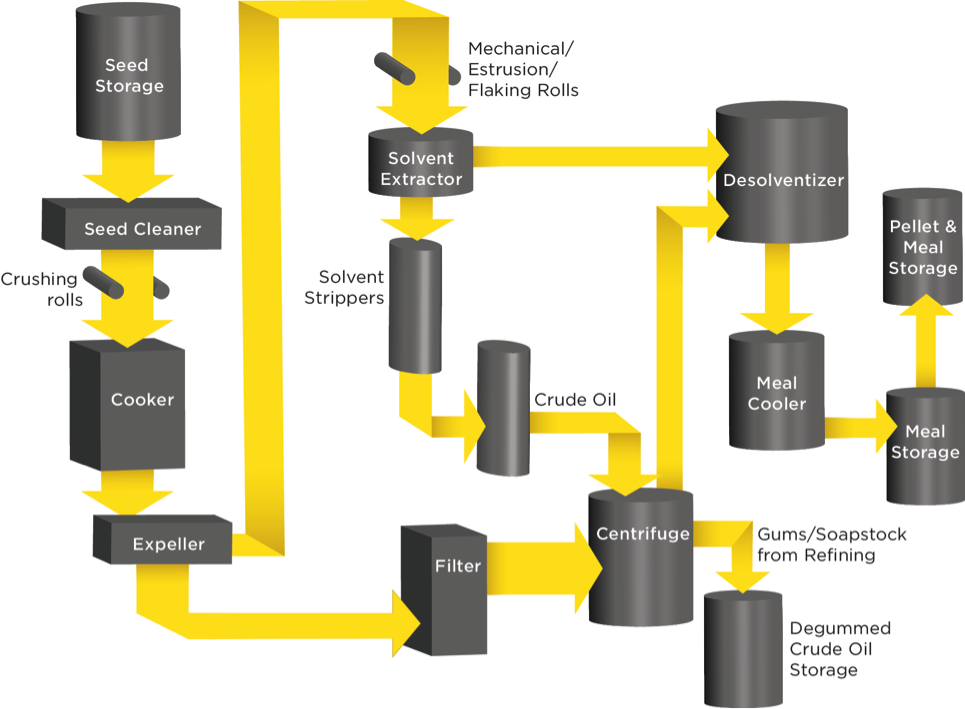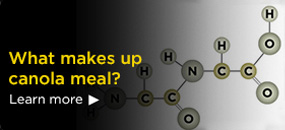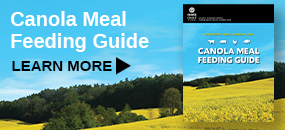

October 2013
The canola plant is a variation of the rapeseed plant, and was developed in the 1970s through standard plant-breeding techniques, resulting in a seed that provides an oil with lower levels of erucic acid. Canola meal was created for its oil, but the by-product of the oil extraction process, the meal, has become extremely valuable as well, especially to livestock producers.
Canola meal has low levels of glucosinolates in the coproduct meal portion, as well as a superior amino acid profile and high levels of rumen undegradable protein (RUP). Thanks to its superior protein makeup, canola meal has become a popular protein source in animal feeds around the world, including in rations for lactating dairy cows. The process from field to meal is made up of several critical points that must be monitored in order to ensure a high-quality, consistent end product:
The temperature during processing is crucial. If temperatures are too high for too long, the protein quality of the meal can decrease. Excessive heating reduces animal digestibility of some amino acids, so processors must exercise strict process control to ensure temperatures remain consistent and amino acid damage is minimized by not overheating the meal in the desolventizer-toaster. Canola meal’s amino acid profile is very attractive to dairy producers and nutritionists, because minimizing heat damage during processing helps to ensure a consistent protein source for dairy rations.



